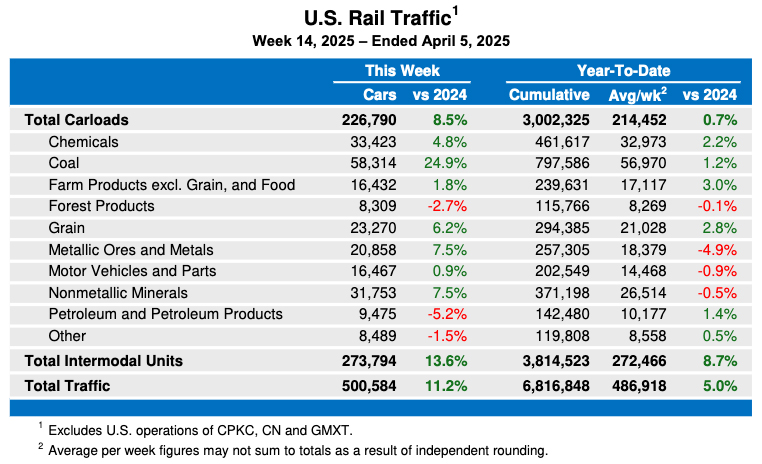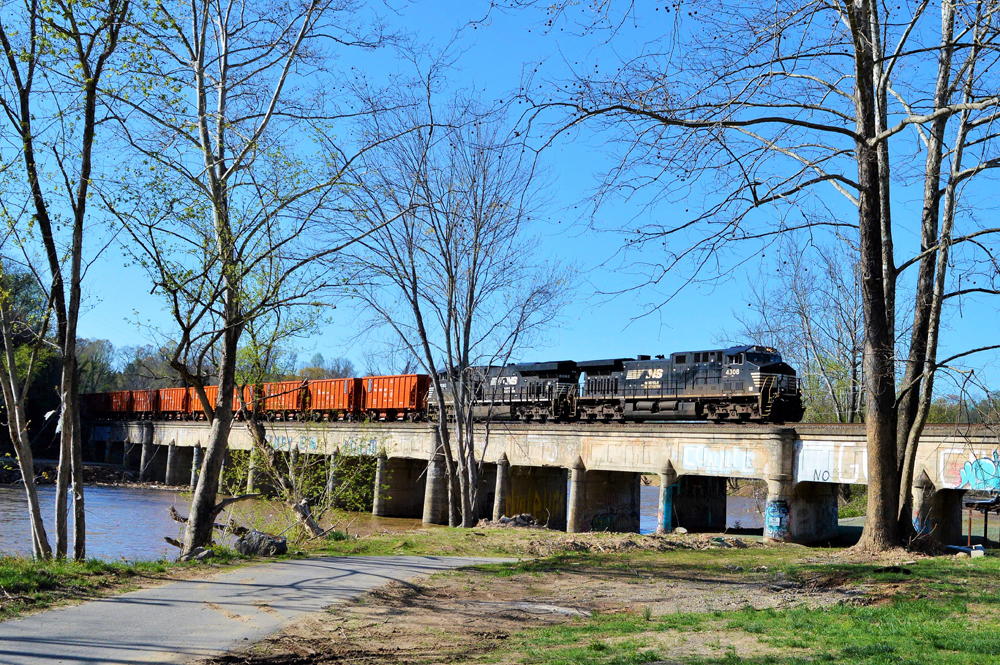Available at www.rapidotrains.co.uk in 10 road numbers and several paint schemes. List price: £39.95 (approximately $50.00 as of this writing)
Pluses
Fine handrails, detailed interior, free-rolling metal wheels, and NEM coupler pockets
Minuses
Loose interior detail needed repair
Verdict
A highly detailed rendering of a staple of GWR and early British Railways rollingstock – every Western Region goods train should have one.
Overview
While there are things about British railroading that look similar to North American trains, their rollingstock has many unique qualities to it, making for very distinct models. Rapido Trains UK has released an OO scale (1:76 proportion) model of a Great Western Railways AA20 brake van, commonly referred to as a “Toad.” The name Toad comes from the railroad’s telegraphic designation for goods (freight) brake van. While it strongly resembles the North American caboose, brake vans had a very different function in early 20th Century British railroading.
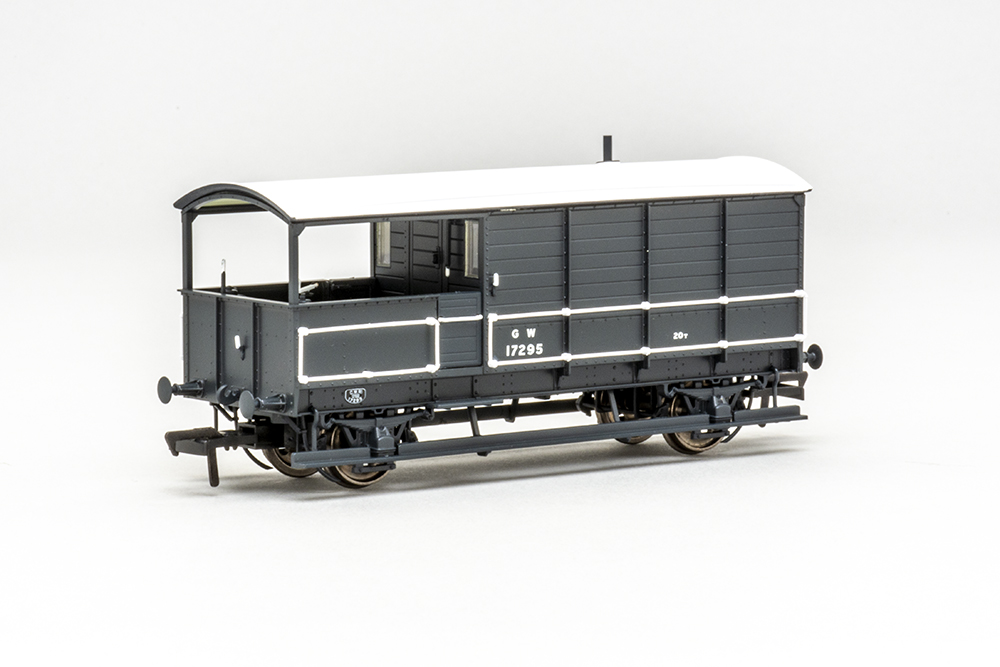
What is a brake van anyway?
Early British rollingstock was equipped only with handbrakes. As the trains of this period were somewhat short and made up of relatively small, lightweight equipment, a brake van was added to the end of the train to assist the locomotive in braking.
To slow or stop a train, the driver (engineer) would apply the brakes on the locomotive. He’d also signal the guard (conductor) in the van to set his brakes as well, thus slowing the train from the front and the back at the same time. When the train was to move again, the driver would signal the guard to release his brakes. Handbrake-only rollingstock was called “unfitted,” meaning it had no automatic brake system. By law, trains of unfitted stock (freight cars) required the use of a brake van to be operated in a train safely.
While North America adopted the automatic air brake system, English railroading utilized a vacuum brake version. While quickly adopted on passenger equipment, automatic braking was implemented very slow on British goods stock (freight cars). As such, many Great Western brake vans were never fitted with automatic brakes right up to their retirement in the mid-1960s.
The Great Western Railway (GWR) starting building Toad-style brake vans in 1888, producing hundreds in 23 different classes, designated AA and followed by the plan number. Rapido’s model is a 20-ton van based upon design AA20. This class of van was built from 1934 to 1943, and the GWR produced more than 350. The requirement for brake vans on British railroads ended in 1968, when vacuum braking and unfitted stock were fully replaced by air brake-equipped trains.
Despite their working careers ending in the 1960s, many Toads have survived to present day. Wikipedia listing at least 5 AA20 examples still working on preservation railways, with many other AA classes also listed.
Rapido’s AA20
I purchased my AA20 Toad model from Rapido Trains UK and ordered one with small GWR lettering and no home depot stencil.
The GWR typically assigned brake vans to specific terminals where they served on the same trains day in and day out. (Some even had the name of the conductor painted on the side.) The railroad would stencil the name of the home depot on the car body to make sure it stayed in captive service. Since I haven’t selected a location for my UK layout yet, I wanted an unmarked Toad for now. Rapido does offer the model stenciled for several depots, as well as painted for their later careers in British Railways and in maintenance-of-way service.
The model is made from plastic and metal parts. It features two single-axle wheelsets fixed to the frame, which is common for English goods stock of this time period. The metal wheels are fit onto metal axles and roll very freely – so much so that the car has a hard time staying put on non-level track. My sample included three-hole disc wheels, which were introduced on the GWR in 1927. Previous to 1927, the GWR used an 8-spoke wheel, and for a time after 1927, rollingstock was built using both types. Rapido UK offers Toads featuring both spoke- and disc-type of wheels.
The underbody also features eight clasp-type brake shoes and their associated rod and hanger assemblies, which look great on the model. The sand pipes are also represented on the car.
Buffers and Couplers
Buffers are a component of the coupler assembly on British railroad stock. These are basically a form of shock absorber and spacer used with hook-and-link as well as screw-coupling systems. The Rapido UK Toad comes with static (no-springs) RCH (Railway Clearing House) buffers.
The model is fitted with NEM pockets and European model train hook-and-loop couplers. The brake van couples well with other cars and locomotives similarly equipped.
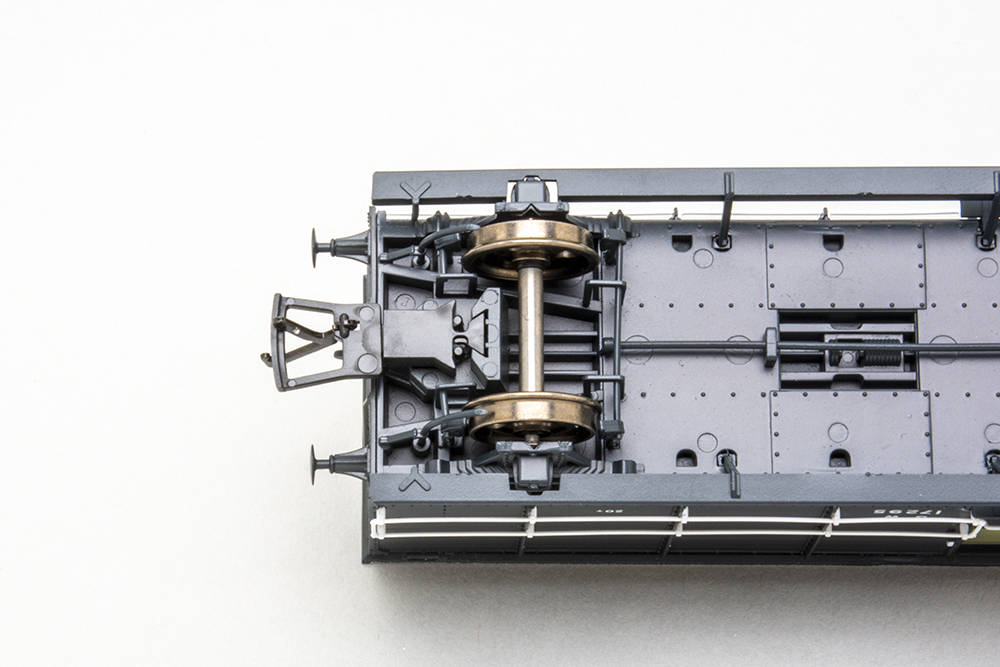
While I have nothing against Rapido on following the industry standard, I’ve never cared for this type of coupler. I find it obtrusive, and it places the cars unrealistically far apart. However, there are also no good alternatives. British trains of this era use 3-link chain couplings and hooks, as well as hook-and-link screw couplers. Slater’s offers working link couplers, but attempting to use them on an operating OO scale layout is challenging at best, particularly if you’re like me and have shaky hands and aging eyes.
Giving up on scale fidelity, I typically replace the European style loop couplers on my British trains with Kadee HO scale NEM conversion knuckles with the trip pins removed. These are much smaller, couple reliably, and allow the cars to be connected close together, providing a more realistic appearance when in a train. Unfortunately, due to their very unprototypical knuckle, they also stand out obnoxiously when cars are spotted alone.
All that to be said, the Rapido Toad’s NEM pockets will make it easy to swap couplers using Kadee no. 18 medium-shank NEM couplers.
Interior detail
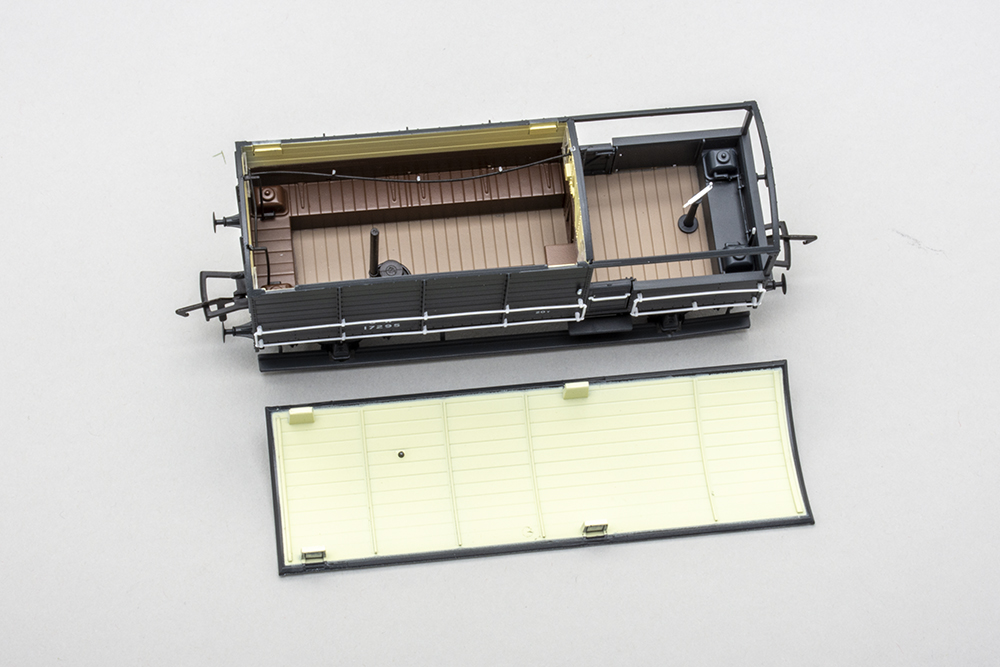
Something that the Rapido Trains does really well on its models is providing a detailed interior. The AA20 model does not disappoint. And what impressed me more is that the interior is completely painted, with appropriate cream and brown walls, white roof, brown painted toolchests and benches, and a tan floor painted to resemble the bare wood of the prototype. It also comes with some modeled control rod detail that would be used to activate the sand chutes located at the end of the cabin. While the rod that runs along the ceiling of the car was detached on my model, it can easily be put right with a drop of CA.
On the open porch end of the brake van, the half-doors are separately applied pieces instead of being molded into the body. This makes them appear as though you could actually open them, and it adds a lot to the realism of the car. The sand boxes at the far end of the porch have lever and rod detail for applying sand to the rails to keep the wheels from slipping while braking. The brake standard with its screw lever is modeled in fine detail as well.
Despite the crew cabin and its warm stove, on this type of brake van, the guard would ride in the open compartment exposed to all kinds of weather. To use the car in a train, you will want to place a figure in this area to represent the guard. This would be easy to do, as the roof is removable. It’s held to the model with four small magnetic latches, which hold it snuggly, but also make it simple to remove.
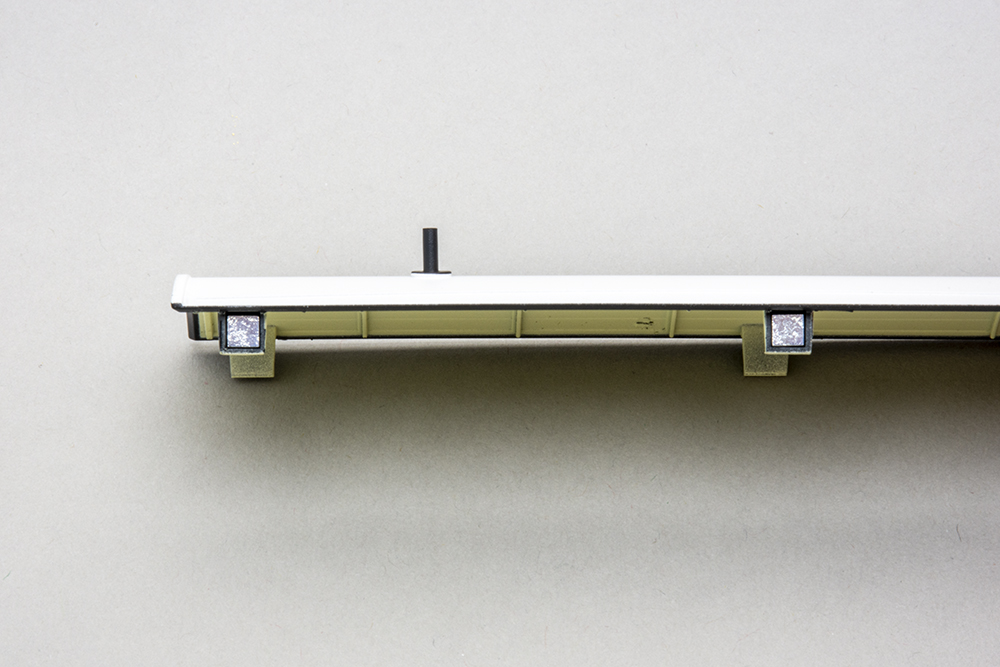
Exterior trim
Perhaps my favorite feature of the Rapido model is that it comes with separately applied handrails. AA20 Toads had a double set of handrails that ran along the entire length of the car, and they also had car-length footboards on each side, so crew members working around the van during shunting (switching) could ride along for short moves without having to climb completely aboard. The separate railings are delicate plastic parts and molded to represent the iron pipe and elbow fits used on AA20 and other GWR brake vans.
In addition, the model features four separately applied lamp brackets. When operating the model in a train, it should have a lamp attached to the end of the car, mounted to the bracket.
Rapido UK also offers the model with a few other features that vary depending upon when the car was constructed. Mine features long rain strips molded into the roof. These were used to divert rainwater off the ends of the car and not the sides where the exposed crew could get wet. Some models come with a short rain strip roof instead.
My Toad also featured lower footboards than early AA20 vans. This was a design change introduced in 1939 with the AA21 plan and was also applied to late-model AA20s. The change was likely for safety reasons, as it made it easier to step on and off the van while it was moving.
The exterior of the model features neat, crisp paint and lettering, and it includes the GWR builder’s plate on the frame, complete with correct car number. An item of note is that while the AA20s were designed to be 20-ton cars, GWR increased the weight on some to 25-tons for use on heavier trains. Those were identified with a white star painted below the depot name. Rapido offers at least one up-rated Toad in its line with the correct 25-ton markings.
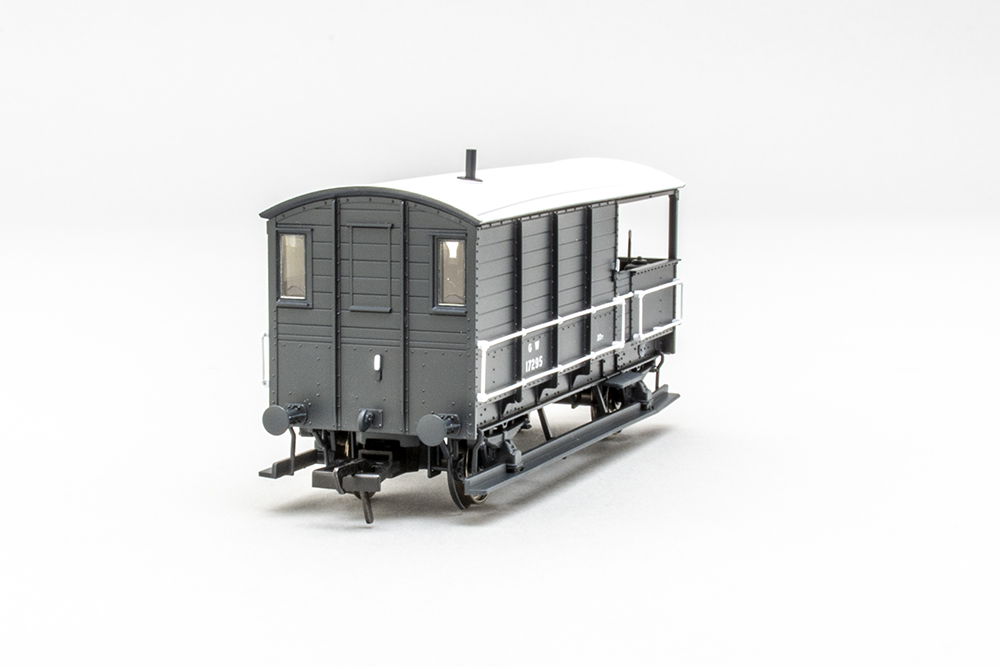
Verdict
The Rapido Trains UK AA20 Toad is a hit in my book. You can’t beat the wealth of separate details. And even though you can’t see the complete interior of the cabin through the tiny end windows, just knowing it’s there makes the model feel all the more lavish. Finally, those separate handrails and porch doors really make for a fine model. Great Western and early British Railway Western Region fans will want several of these for their collections.
For some good modeling tips and prototype information on GWR Toad brake vans, check out Russ Elliot’s article, “GWR Goods Brake Vans” on the GWR Modelling website. In fact, this site is a great resource for anyone interesting in modeling the Great Western Railway.







